Stereo vs. Compound Microscopes: What’s The Difference?
Last Updated on
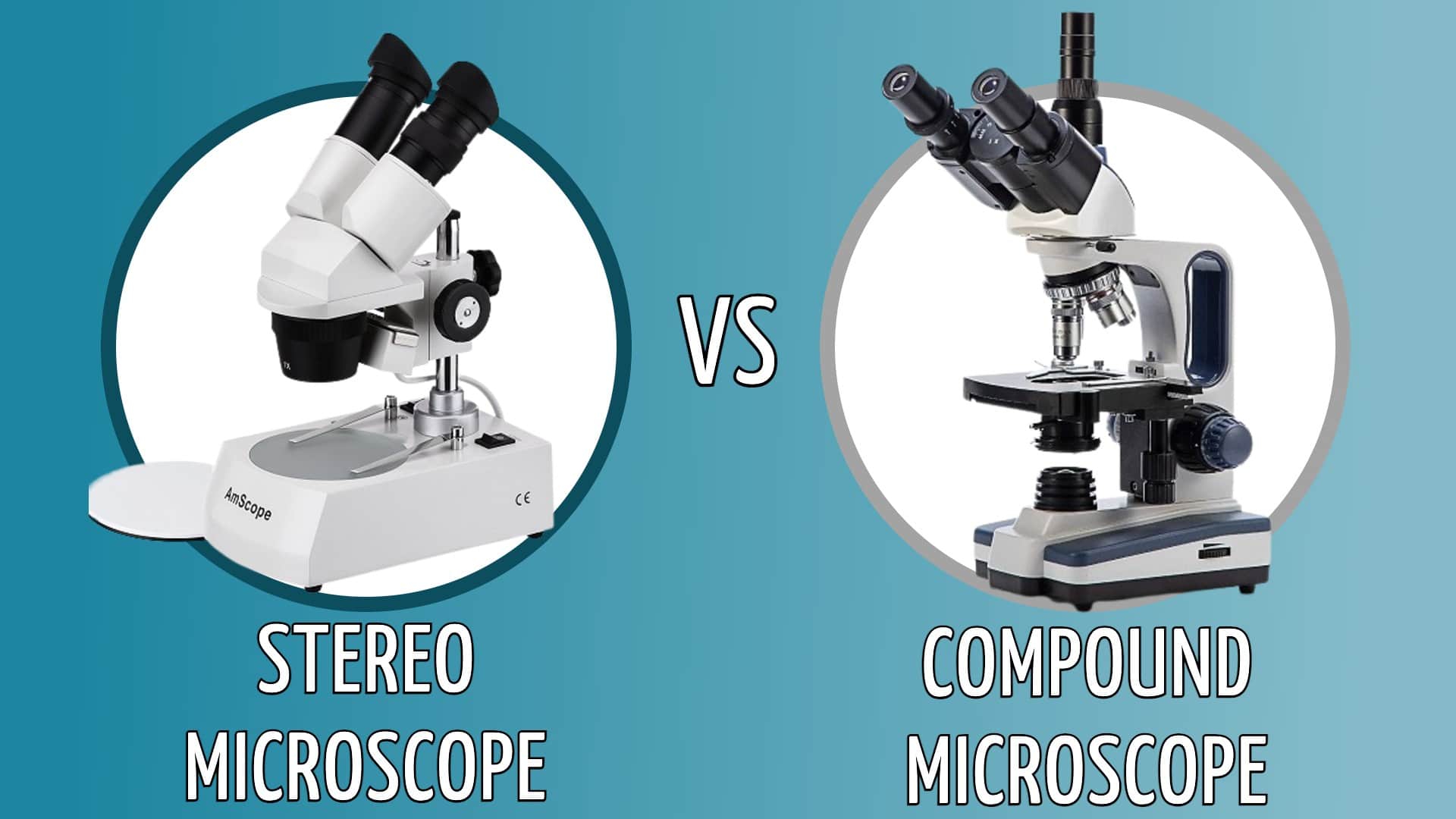
Go ahead and ask any research scientist what’s the one tool of the trade that you’ll never find them without. Go on. We’ll wait. Oh, you already have an answer? What is it? A microscope? Well, we thought so, too.
And that’s why we thought, “Why not talk about microscopes today?” But more specifically, stereo and compound microscopes. What makes them so different? Do they come in different types? Who uses them, and why?
So… Shall we?

An Overview of the Stereo Microscope
In some circles, you’ll hear guys refer to it as the stereo zoom, stereoscopic, or dissecting microscope. This microscope is only applicable in situations that don’t require high magnification, and its primary light source is the one reflected from the sample’s surface. And by the way, that’s an important piece of information to note down considering in the case of a compound microscope, the light’s transmitted through the object under observation.
One other thing that makes this microscope different is the fact that it has separate eyepieces and objective lenses. In other words, your left and right eye will have two separate optical paths.
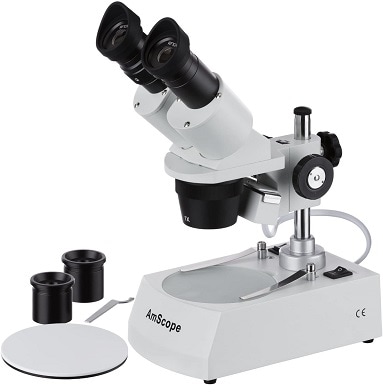
Who Uses Stereo Microscopes?
The three-dimensional visual generated by this microscope has to be the reason why it’s so popular among users. It has made it possible for users to study different specimens in real-time while simultaneously making observations.
Stereomicroscopes are used:
- Quality control: Workers in the department need microscopes to check product quality, and look for microfractures.
- Repairs: Electronic technicians depend on these microscopes when repairing the circuit boards.
- Pathology: Do you seriously think you can examine body tissue with your naked eyes? D
- Surgery: An operating microscope is often used in hospitals during microsurgery.
Types of Stereo Microscope
Stereo Zoom Boom Stand
What makes this microscope stand out in this group is its large stage and base. These extraordinary features are supposedly meant to make it easier for the user to study significantly larger objects that won’t properly fit on a typical microscope. The Stereo Zoom Boom stand also has a zooming range of 6X-45X, and an LED lighting. Oh, and in case you were wondering, it also gives you the option of altering the zoom range upward using eyepieces or auxiliary lenses.
Single Magnification Pocket Microscope
Its compact size and ease of use are the two things that make this Japanese product so appealing to so many new microscope users. You’ll also be delighted to learn that it requires no extra lighting, and has two magnification powers.
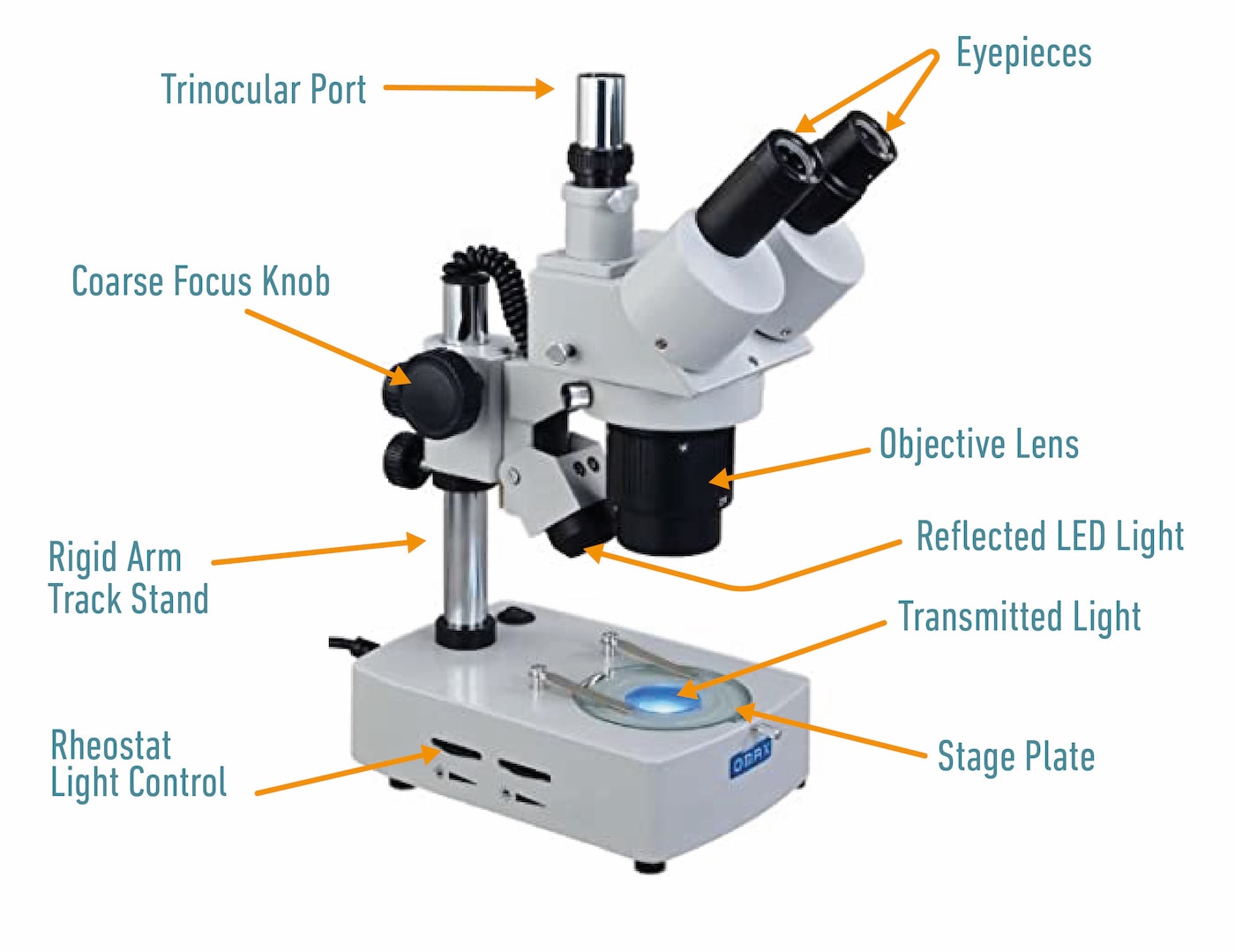
Stereo Zoom Dissecting Microscope
Would you describe yourself as an outdoorsy person? And do you love taking pictures while working outdoors? Well then, you’ll love this particular microscope because it can be easily attached to any type of camera, and has a zooming range of 6.7X-45X. Moreover, it has a 360-degree rotation capability, and comes with a dual-LED illuminator.
Dual Power Stereo Microscope
You don’t have to be Einstein to figure out what that means. The device is dual powered, and can rotate at 360 degrees for easier viewing and focusing. It seems like the dual power stereomicroscope does have a lot to offer, since you’ll also be getting a dual achromatic, objective pair, and a flexible stand that you can lift anytime you’re studying or viewing a larger object.
- Can be used when viewing large specimens or objects
- Very portable and user-friendly
- Can be attached to a camera of any kind
- Has great magnification thanks to the two light pathways
- Applicable in any field
- It’s not budget-friendly
- Compared to the other microscopes, it has a lower magnification
- Its lenses are also costly

An Overview of the Compound Microscope
According to the dictionary, the definition of the word compound is, ‘consisting of two or more elements.’ Therefore, assuming the microscope that you have in your possession has two or more lenses, it will obviously be a…
A compound microscope has two types of lenses. There’s the ocular and the objective lens, which offers the primary magnification. Unfortunately, you won’t be getting 3D visual information while using this type of microscope. And if you thought that was a bummer, you’ll definitely be more disappointed to learn that most of the time, the images produced are either backward or upside down.
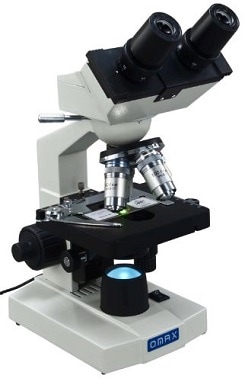
Who Uses Compound Microscopes?
The fact that they mostly provide higher magnification and resolution is the reason why they are usually found in professions characterized by in-depth research.
Compound microscopes are used:
- Biologists when examining plant cells
- Virologists studying the microbial world of viruses and bacteria
- For education purposes
- When studying minerals and metals
- By law agencies when solving crime
Types of the Compound Microscope
Toy Microscopes
You’ll find them in toy shops or stores that don’t really specialize in things microscopic. Sorry, what’s that you asked? How will you distinguish a toy microscope from any other microscope? It’s not that difficult to identify a toy microscope seeing as they often have shiny accessories that only appeal to kids.
And trust us when we say, you don’t want to buy this microscope if you’re serious about investing in one. Not unless you’re buying it for your child. Focusing is always difficult, their resolutions are normally low, and the brightness can only be described as nonexistent.
Education Microscopes
Now, these are the type of microscopes that you go for if you’re still new to the game. They are affordable, portable, and easy to use. On top of that, you don’t have to worry much about accessing a power supply given some of them are battery operated.
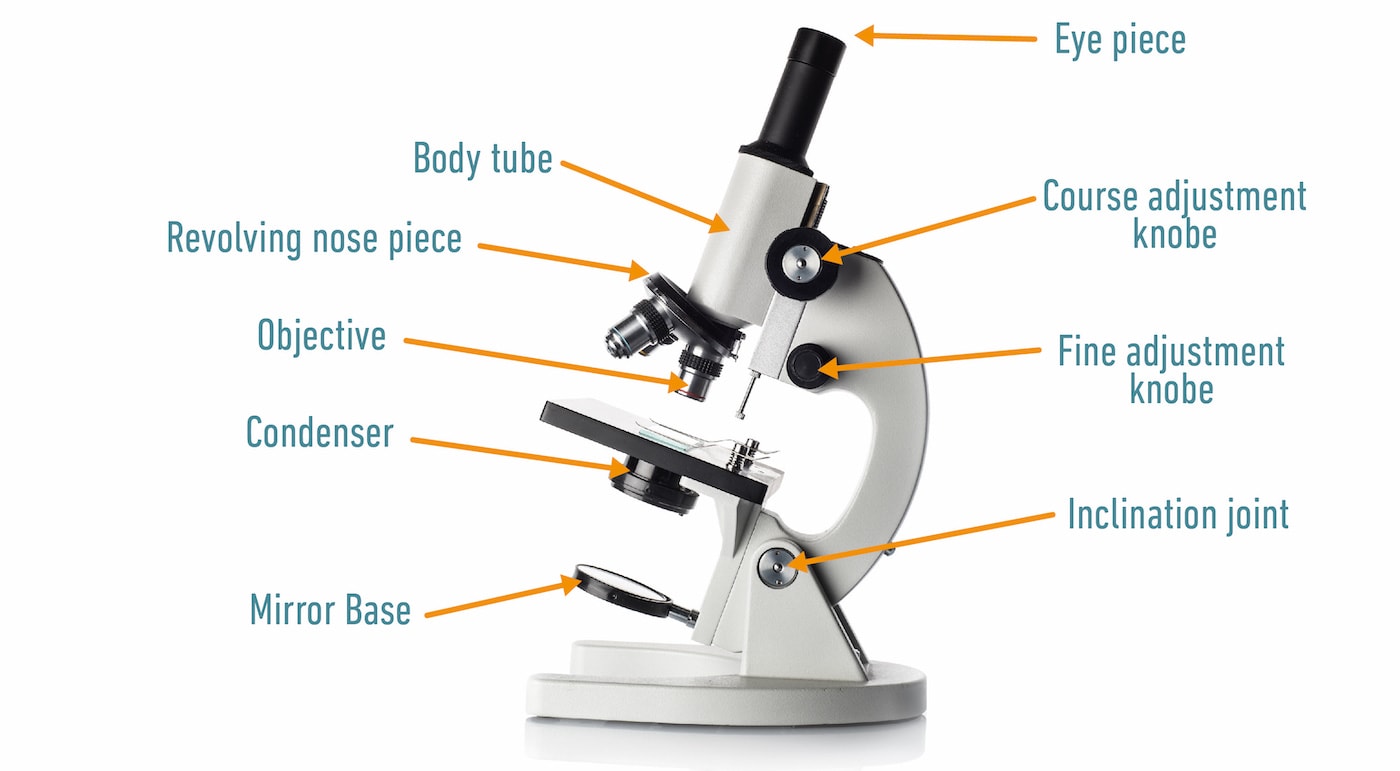
Laboratory Microscopes
Compared to the other two, they are a tad bit heavier and larger. Some of their distinguishing features include the mechanical stage, revolving nosepiece, and a Kohler-illumination condenser. Just so you know, a laboratory microscope can also be useful to a student, since it has a binocular head that supports longer observation.
Research Microscopes
These microscopes are the crème de la crème in the industry. They’ll for sure surpass your expectations in every way.
But like everything else, they too have a downside. It’s almost impossible to move one from point A to B without assistance, and they’re known to be quite costly. Let’s just say if you walk into a room and find a research microscope, it will most likely be the only one available, with a long queue waiting to use it.
- Reveals a great number of details
- Very convenient
- Has its own lighting source
- Not affordable

The Difference between a Stereo and Compound Microscope
Magnification
By definition, the magnification of any microscope refers to the degree to which an object under observation has been enlarged. You’ll hear observers talk about how an object was magnified 2X, 4X, or 8X, indicating that it was enlarged twice, four times, or eight times, respectively.
Stereo and compound microscopes have different magnifications. In fact, this aspect is one of the primary differences between the two of them. If you’re looking for a higher optical resolution, we would advise you to go with the compound microscope, as it has a magnification that ranges between 40X and 1000x. A stereomicroscope only has a magnification range that’s between 6X and 50X, making it less ideal for viewing microscopic specimens.
Depth of Perception
This isn’t as complicated as it sounds. It’s basically a microscope’s ability to paint a three-dimensional picture of any object. And if you’ve been with us from the start, you already know what makes the stereomicroscope so different from the compound microscope is the fact that it has been designed to offer a three-dimensional view of anything that goes under its lens. Hence, making it the appropriate microscope for studying or even manipulating objects.
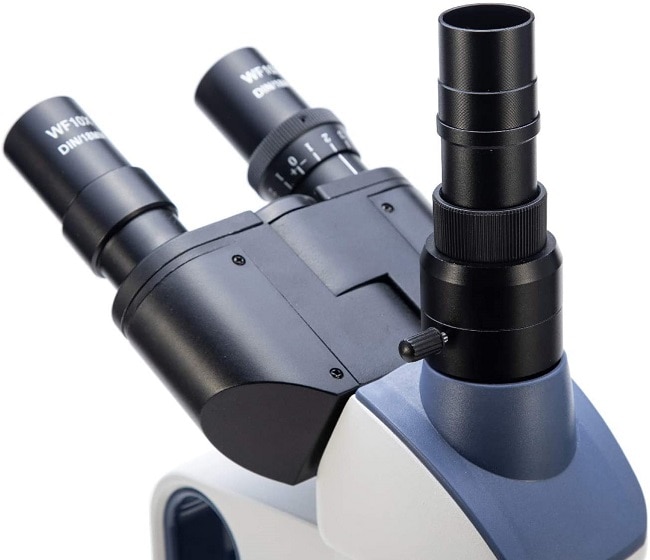
Working Distance
That distance between the cover slip’s surface and your objective lens is what we’re referring to as the working distance. To get an accurate interval, you first have to make sure the specimen is in focus, and not blurry.
The working distance will always be there whether you’re working with a stereomicroscope or a compound microscope. It’s just that the intervals are different. The stereo has a larger interval compared to the compound microscope.
Adjustment Knobs
All microscopes come with adjustment knobs—Every single one of them. But, there’s still something that the stereomicroscope lacks that the compound microscope has, and that’s the fine focus knob.
Do you remember when we earlier mentioned how stereomicroscopes are mostly useful when viewing larger objects? You see, because they provide lower magnifications, they don’t need the fine focus knob. It’s only useful on microscopes with high magnifications i.e. compound microscopes.
The Specimen
We don’t have to go heavy on the details when talking about the type of specimen because we’ve already talked about this aspect in almost every section. The only thing worth remembering is, if you want to view a larger object, you’ll need a wider working distance that’s available on the stereomicroscope.

How to Use a Microscope
Stereo and compound microscopes and every similar in this regard. We first need to set it on a flat sturdy surface, so that you can have enough room to work. Okay, now do you see that power cord? Yup, that one. Just go ahead and plug it into the power outlet. Once that’s done, and you’ve made sure no excess cord is lying around, switch on your light source.
By the way, a light source is not a necessity, if the specimen that you’ll be viewing is transparent. The light emanating from the bottom will work just fine. Unless it’s an opaque or solid object that doesn’t allow any light to pass through. If that’s the case, you’ll have to use top lighting.
Now, let’s move on. The next step is to make sure your stage plate is clean, and the specimen is centrally placed. You’re allowed to use stage clips, if the specimen’s edges keep curling up. Just slide over the clips after pulling up the pointed end, and they’ll hold it in place.
Are we still together? Okay, go ahead and adjust the stereomicroscope’s eyepieces. We don’t want you straining your eyes, now do we? Slowly turn your focus knob, and don’t stop turning, until you see the specimen’s outline. If you’ve been at it for hours, but you still can’t see anything, that could only mean one thing—the specimen wasn’t placed directly below the microscope’s objective lens. Slightly move it, and then give it a shot one more time.
Can you now see the specimen in 3D? Yes? Awesome! You can now study it for as long as you want, but don’t forget to unplug the power cord once you’re done.

Final Thoughts
But before we go, we want to remind you of this; deciding to invest in a lower quality brand is a colossal mistake. You’ll save money now but in the long run, you’ll end up spending a lot of money replacing different worn-out parts or looking for upgrades. It’s honestly not worth it. Go for a German or a Japanese brand. You might be forced to dig deep into your pockets, but it’s definitely worth the hassle.
About the Author Robert Sparks
Robert’s obsession with all things optical started early in life, when his optician father would bring home prototypes for Robert to play with. Nowadays, Robert is dedicated to helping others find the right optics for their needs. His hobbies include astronomy, astrophysics, and model building. Originally from Newark, NJ, he resides in Santa Fe, New Mexico, where the nighttime skies are filled with glittering stars.
Related Articles:
How to Clean a Refractor Telescope: Step-by-Step Guide
How to Clean a Telescope Eyepiece: Step-by-Step Guide
How to Clean a Rifle Scope: 8 Expert Tips
Monocular vs Telescope: Differences Explained (With Pictures)
What Is a Monocular Used For? 8 Common Functions
How to Clean a Telescope Mirror: 8 Expert Tips
Brightfield vs Phase Contrast Microscopy: The Differences Explained
SkyCamHD Drone Review: Pros, Cons, FAQ, & Verdict
